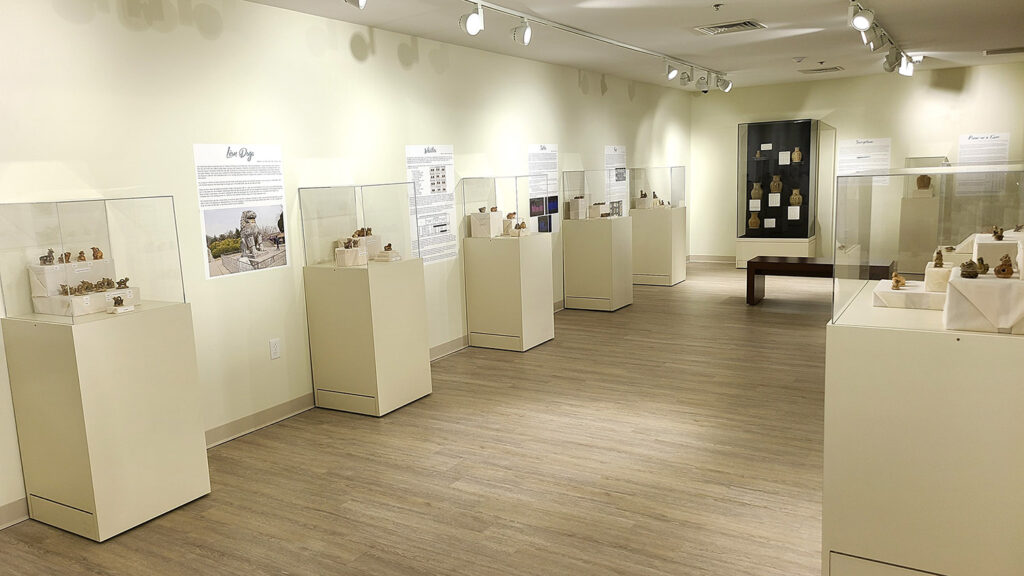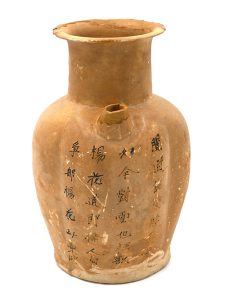Lam Collection on Display
The Museum’s newest exhibit, Fragments of Changsha: Medieval China in Miniature, features more than 70 objects from the Timothy S. Y. Lam Collection, many of which have not been displayed before. Donated in 2012, Mr. Lam’s collection focuses on Changsha Ware, a style of Chinese pottery produced from around 750 to 900 CE in kilns near the modern city of Changsha in Hunan Province. Changsha Ware had a major cultural and commercial impact on the medieval world. With the growth of Silk Roads trade across Asia, Africa, and Europe, Changsha Ware spread throughout the world.

In addition to millions of ceramic vessels like bowls, cups, and ewers, Changsha potters also produced an enormous range of miniature figurines. Often playful and expressive, they depict animals, people, and fantastical creatures. The many subjects provide a glimpse into the cultural life of Tang Dynasty China. Some figurines were created as whistles or toys, while others may have been charms or ritual objects. Some may have even been mass produced as paperweights for the desks of bureaucrats.
The exhibit highlights original Wake Forest student research to better understand what these figurines represent. Students in Anthropology 305: Museum Studies selected a range of miniatures from the Timothy S. Y. Lam Collection and then analyzed their physical qualities, looking closely at the minor differences between similar objects. The exhibit also includes honors thesis research by Michelle Ye (’25), who specifically studied a group of figurines believed to be toys.
The research undertaken by these students was not an easy task. Each artifact is more than 1000 years old, and most were fragmented or broken after they were thrown away. All of the artifacts on display were discovered in trash pits near the Tongguan Kiln site, suggesting that these artifacts contain mistakes or errors that further complicate their meaning. Some archaeologists have hypothesized that the figurines were thrown away because they were made by children for their own amusement. Despite these challenges, the students were able to make meaningful contributions to the research on this collection.

The analysis of the miniature figures is complemented by additional research on Changsha Ware vessels with calligraphic inscriptions by graduate students in the WFU Interpreting and Translation Studies Program. These students were able to translate the inscriptions on seven vessels, including one that displays a potentially previously unknown Tang Dynasty poem.
Fragments of Changsha: Medieval China in Miniature will be on display through November 22, 2025.

